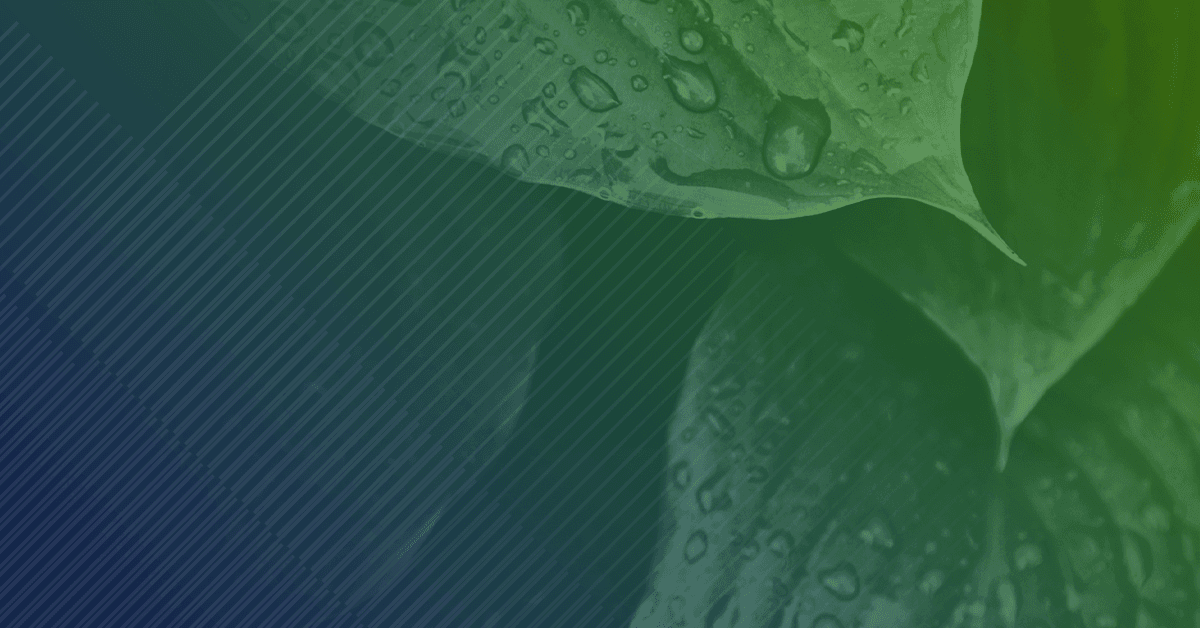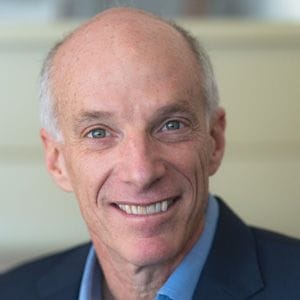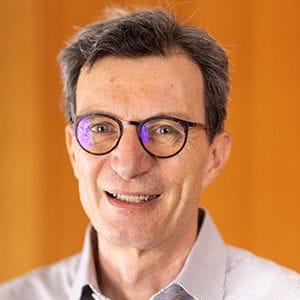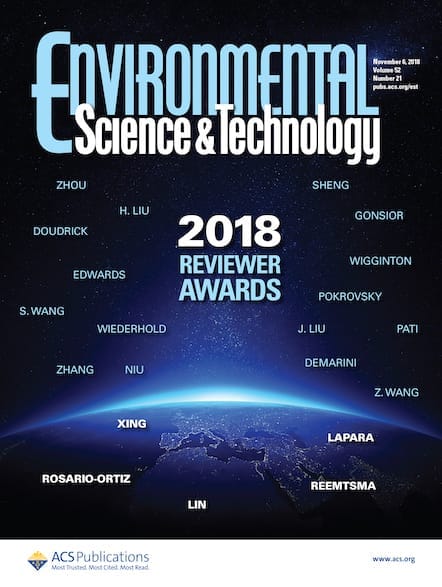This annual award recognizes change makers whose research and service contributions have substantially supported improvements in human health and/or the environment. Read our exclusive interviews with the 2025 winners below.

Environmental Science & Technology and Environmental Science & Technology Letters are delighted to announce the joint winners of the 2025 Outstanding Achievements in Environmental Science & Technology Award.
This award recognizes contributions to the fields of research that have substantially contributed to improvements in human health and/or the environment. These improvements include, but are not limited to, new public policies, devices, or treatment systems widely adopted by governments, industry, or researchers.
2025 marks the award's fifth year, and this year we are excited to recognize two outstanding researchers based in the Americas Region.
Congratulations to Professor David L. Sedlak from University of California, Berkeley, United States of America, and Professor Frank Wania from the University of Toronto Scarborough, Canada, on this significant achievement.
Prof. Sedlak and Prof. Wania will each receive their award and present a lecture during a special ES&T Journals Award Session at ACS Spring 2025 on Monday, March 24. Come and join us in congratulating them.
Read our exclusive interviews with the 2025 award winners below.
Professor David L. Sedlak

Describe your current area of research (or areas of interest).
My research team is currently focused on three different areas:
- Engineering of nature-based systems for water quality improvement: After documenting the poor performance of conventional surface flow wetlands in the treatment of trace organic contaminants, we developed two alternative approaches. Open water wetlands ensure increased contaminant removal by improved hydraulics and the use of shallow-water zones that favor photochemical reactions and the metabolic activity of diatoms. Horizontal levees are a new type of subsurface wetland with large redox gradients that exhibits unexpectedly fast removal of organic contaminants and nitrate.
- New approaches to hazardous waste site remediation: We have been studying the mechanisms of contaminant transformation during the application of in situ chemical oxidation (ISCO); first with hydrogen peroxide and more recently with peroxydisulfate. We are particularly interested in the role of surfaces in preventing the oxidation of particle-reactive contaminants and in creating radicals at the interface.
- Fostering deployment of decentralized water treatment technologies: If we can make small-scale water treatment technologies reliable and cost-effective it will be much easier to recycle water close to its source and to ensure safe and affordable water in rural communities. We are currently working on small-scale electrochemical water treatment systems and developing a framework for overcoming the barriers to adoption of decentralized systems.
What have been some of the key influences that have shaped how your career has developed?
My most impactful research has been conducted in response to problems that I learned about by interacting with people and institutions responsible for protecting public health and the environment. For example, after completing my undergraduate degree I spent two years working on hazardous waste site remediation. The lack of effective in situ treatment methods spurred my interest in research that could make ISCO more predictable and effective. Since arriving in California in 1994, the dynamic water professional community in the state has inspired my research on water recycling, stormwater capture and management of emerging contaminants. Living in a water-stressed region has helped me find good research topics, but every place has unique challenges that can inspire research.
I also have been fortunate to have worked with talented people who have broadened my horizons and taught me how to be a better researcher. Early in my career, my dissertation and postdoctoral supervisors showed me how to conduct rigorous research. Later, research collaborators who worked in adjacent fields like ecotoxicology (Dan Schlenk), analytical chemistry (Jennifer Field) and environmental microbiology (Lisa Alvarez-Cohen, Josh Sharp) helped me apply my knowledge to new problems. Simultaneously, conducting research and writing papers with visionaries from my own field, like Urs von Gunten, Janet Hering and Dick Luthy taught me how to synthesize messages that changed attitudes about the implications of research. More recently, research with early career researchers, including Jelena Radjenovic and Christian Binz introduced me to ideas that have driven my research in unexpected, new directions.
What do you consider some of the most important highlights from your career so far?
Like most researchers, publishing a paper, speaking at a conference or receiving a grant are always exciting, but the true highlights of my career have been the times when I learn about change that has been related to my research. Seeing the widespread adoption of the total oxidizable precursor (TOP) assay for quantifying PFAS by engineers, regulators and research has been very satisfying. While being part of the current effort to build full-scale horizontal levees and open water wetlands in the San Francisco Bay is currently inspiring me. I also find great joy in knowing that my books, talks for the public and lectures have influenced career decisions and changed people’s minds about some aspect of water.
What is your advice for young investigators?
My first piece of advice is to take any advice that you receive from an elder with a certain amount of skepticism because everyone finds a different path to fulfillment. Keeping that in mind, I encourage young investigators to consider the following:
Interact professionally with people outside of academia. It requires additional time and effort but learning about the way that the people who use your research perceive of problems will help you to conduct research that brings about change.
Choose problems that are important but understudied. If there is already a large group of researchers conducting research on a topic it will be difficult for a new, young researcher to have an immediate impact. In my experience, there are almost always questions of great significance where a modest amount of research could have an immediate impact.
Find collaborators who inspire and challenge you. It takes a while to figure out how to work with someone from another discipline, so finding people who you like interacting with will ensure that you find the place where you can bridge the gap between different perspectives.
Push the forefront of knowledge without getting tangled in the Web of Science. In many places, the reward system pushes young investigators to publish a lot of short papers in journals that are perceived to be impactful based on metrics that are of dubious quality. It is often more effective to spend more time writing a smaller number of papers that speak directly to the leaders in the subject area.
Invest in what comes next. Although the many tasks needed to establish a research career demand a lot of attention, it is important to make time to follow your curiosity into new topics. As a young researcher, I always had three or four topics that I was following. Sometimes these topics evolved into a research project or led me to another area that eventually influenced my research.
Professor Frank Wania

Describe your current area of research (or areas of interest).
Currently, we are exploring whether we can make a contribution to the prioritisation of molecular features detected during the non-targeted analysis of environmental samples. In one line of investigation, we seek to leverage our expertise in exposure modelling, aiming to predict which molecular features may represent contaminants with the potential for high exposure of humans or wildlife. The challenge is that the starting point of our modelling traditionally has been molecular structure, but here we are faced with having to simulate features whose structure is still unknown. We also try to design experiments, where the relative size of the peak intensity of molecular features in a series of samples analyzed by non-targeted analysis can be used to identify contaminants with undesirable attributes, such as high biomagnification potential, persistence or cold-trapping behaviour.
What have been some of the key influences that have shaped how your career has developed?
I get the sense that teachers during undergraduate studies have a large influence on the area we "choose" for our research career, which really implies that happenstance plays a surprisingly big role. I studied at a small, new (at the time) university in Germany and it was the international stature of Otto Hutzinger, my environmental chemistry professor, that opened my eyes to the possibility of pursuing research for a living. That it was research in environmental chemistry was probably more coincidental.
My doctoral supervisor Don Mackay had immense influence on my career development and he shaped the kind of researcher that I have become. One of the key lessons he imparted was the importance and value of simplicity, in the research approaches, in the interpretation of results, and in scientific writing, paired with the recognition that simple is by no means easy.
Overall the largest influence, however, was exerted by my students and postdocs. I learned over the years that it is often best to let a project bend to the inclinations and specific talents of the trainees working on it. They come up with things I never would have dreamed of doing and thereby opened new research directions well beyond their specific projects.
What do you consider some of the most important highlights from your career so far?
A research topic that has stayed with me since my doctoral studies more than 30 years ago is the long range environmental transport (LRET) of organic chemicals. A highlight has been to see the regulatory community's uptake of the concepts and tools for assessing the potential for LRET that we developed, in particular in the context of nominations and risk profiles prepared for the Stockholm Convention on Persistent Organic Pollutants.
We have also worked extensively on the development of inexpensive and simple passive air sampling techniques for contaminant gases in the atmosphere, first for organic vapors and later also for gaseous elemental mercury. One of the highlights of my career has been the opportunity to work with many colleagues from around the world applying these sampling techniques, often to record the first atmospheric concentrations of contaminants in places where it was previously too expensive or too challenging to do so. Examples are artisanal gold mining communities in Ghana and Peru, e-waste recycling facilities in Tanzania, Pakistan and Norway, the mountains of Chile, Costa Rica and Sichuan, the Antarctic plateau, and even in the crater of a New Zealand volcano. Science and research does transcend borders and it is empowering to feel being part of a global scientific community with a shared passion for addressing pollution issues.
What is your advice for young investigators?
Environmental chemistry is decidedly and unapologetically an applied science, mainly aimed at contributing to solving pressing pollution issues. As there are strong incentives (funding, impact, recognition) to work on issues that are perceived to be most important, large parts of the community tend to work on what is currently topical. While there is nothing wrong with that, I would encourage young investigators to also carve out some room for purely curiosity-driven research. I have repeatedly worked on research questions merely because I found them intriguing: How do different organic contaminants get fractionated during the melting of a snowpack? What are the processes that explain the accumulation of contaminants at higher altitude in mountains? Why might a chemical experience two subsequent peaks in emissions? While you may not get high citation numbers for this research, there is real satisfaction to be found in resolving such puzzles and if the questions are sufficiently intriguing, you also will find a receptive audience. And who knows what use the newly generated knowledge will have down the road.
